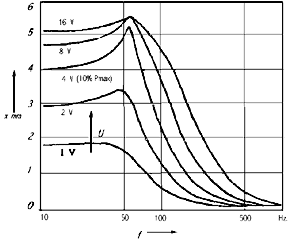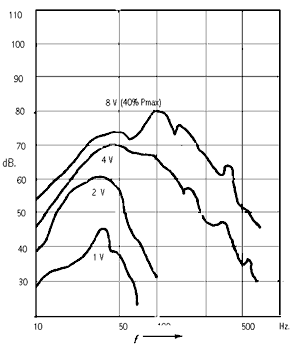| Driver's Small vs. Large Signal Response | ||||||||||
|
|
||||||||||
| The near field woofer
response is modeled as a lumped parameter derived from the Thiel / Small model. Generally
this is a good approximation for small signal response. For large signal this model
is inadequate since it does not deal with the cone compliance and Bl force factors
which are changed by the displacement of the voice-coil and produce as the most dominant
non-linearity, substantial distortion components as well as affect the vibration
and transfer characteristics of the exited fundamentals. These effects are discussed
and modeled in the paper "The Nonlinear Large Signal Transfer Characteristics
of the Electrodynamical Loudspeaker at Low Frequencies", by Wolfgand Klippel,
AES
preprint 3049
(H-7). To compute the non-linearity effects for a specific driver is nontrivial, since specific values have to be measured and extracted from T/S data. Nevertheless some general examples of the changes for a large signal vs. small signal can be given. For a TL design the critical impact is the phase linearity at Fr vs. stuffing density change. |
||||||||||
|
||||||||||
|
[ Back to the Transmission Line Speaker Page | The TLB | Appendix TOC ] |
||||||||||


